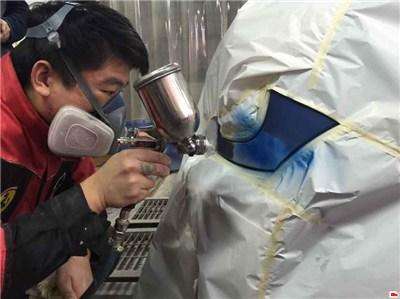Differences between water-based and oil-based automotive coatings
1、 Compared to environmental protection and health, water-based paint has absolute advantages
(1) Environmental friendliness:
Due to the fact that water-based paint uses water as a diluent solvent and has an ultra-low VOC content (lower than the mandatory national standard of 200mg/L), it is a truly non-toxic and odorless high-tech environmental protection product. Oily paint uses organic solvents (banana water, Tianna water) as diluents, and its products contain benzene, toluene, xylene, and their derivatives. In addition, polyester paint also requires the use of curing agents (including TDI), so the toxicity of polyester paint is the highest, followed by the toxicity of nitrocellulose paint.
(2) Flammability:
The water-based paint uses water instead of organic solvents, and its products have the characteristics of safety and non flammability. Greatly reducing the risk factors and troubles in production and circulation processes. The presence of benzene, xylene, acetone, solvent gasoline, and thinner in oily paint is classified as highly flammable.

2、 Quality and function comparison, inductive function equivalence
(1) Hardness:
Due to the use of advanced water-based acrylic acid synthesis system, water-based paint can achieve a physical target of 2H when the paint film is completely dry; Due to the use of organic curing agent (TDI) in general polyurethane paint, the film hardness of general polyester paint is the highest;
(2) Wear resistance, yellowing resistance, durability:
High end water-based paint adopts advanced film forming technology, making the surface of the paint film hard, wear-resistant, flexible, and not white due to collision; And it is not prone to yellowing, with an ultra long outdoor durability function.
Article source: Automotive repair paint http://www.qyjlxc.com
-
08-25
Common problems with automotive repair paint
Why are the orange lines on the surface of the varnish so heavy after each spray? Why on earth? How can we prevent a decrease?Answer: The thinness of the varnish, the amount of paint produced by the s
-
06-05
The car repair paint manufacturer told you about the problem with water-based coatings
1. How long does it take for a skilled paint coating technician to master the operation of water paint?Generally, practice and understanding with less than half a sound can be mastered, and proficienc
-
05-31
Qingyuan Automobile Repair Paint Company tells you the steps for painting
Automotive Painting Process(1) Rust prevention and internal painting of the vehicle body: Depending on the condition of the vehicle body, it will be completed by a sheet metal worker.(2) Polishing and
-
05-12
Why does car repair paint lack luster?
If there is a lack of gloss on the surface of the originally flat and smooth car paint surface, especially during the process of car paint care, it can be observed under a microscope that the surface
